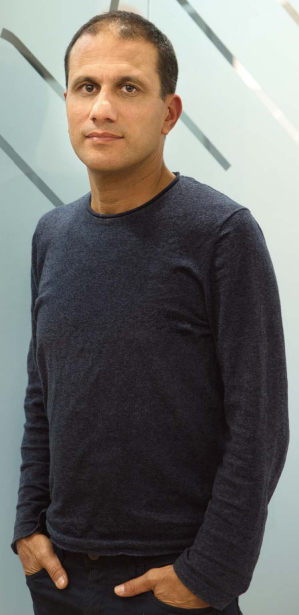IoT is a global industry, and will increasingly rely on 5G network capabilities to deliver low latency, high quality connectivity to fuel the data revolution. However, enterprises aren’t telecoms experts, so providers that can assemble, manage and secure global connectivity play a vital part in enabling profitable IoT activity. Nir Shalom, the chief executive officer of floLIVE, a full-stack provider of IoT connectivity solutions, tells George Malim how the company is simplifying IoT connectivity for enterprises at the same time as delivering new revenues to mobile operators.
Prior to joining floLIVE, Shalom served as general manager of AT&T Israel and vice president of Network Application Development of AT&T. He had previously led the EMEA operations for Interwise – a global provider of voice, video and web conferencing solutions over IP.
George Malim: What trends do you see driving the market and what are the current key requirements?
Nir Shalom: I think that we are in the data revolution era, where we see more and more organisations looking to gain value out of the data coming from their systems, devices, processes and tools. They would like to achieve this value across their entire global operation. We fundamentally believe that one of the accelerators of the data revolution is the 5G network and the global connectivity of devices to the internet.
We believe that 5G will eventually take over from other technologies because it provides tighter control, enhanced security and better performance. Eventually the cost per unit will be at least on par with other technologies. If, for example, you’re thinking about an industrial IoT (IIoT) use case, it will eventually be worthwhile deploying a 5G private network rather than using Wi-Fi or other alternatives in your plant or facility. Of course, many use cases will extend beyond a single country, driving the trend for global deployments. Organisations will also want to obtain a holistic perspective of their entire operation – both in-country and outside.
Data, connectivity and global footprint are the three main pillars of the next century in terms of networking and connectivity.
GM: Are there common requirements across all use cases?
NS: I see four common requirements across all use cases. There’s performance of course. There are many use cases in which achieving low latency is critical for performance, whether it’s battery-operated devices or real-time use cases like healthcare systems or telecoms systems. The other aspect of performance is high throughput. The ability to transfer large amounts of data in a short time is a driver for these networks.
Beyond performance, another required element is quality of service mechanisms and increasingly, dynamic mechanisms which provide the ability to control the different layers of the network according to real-time need. This enables prioritisation of use cases over others, again, on a global scale.
Achieving control over the governance and security elements of the solution are also common demands. It is vital to be able to control which devices are connected to the network and which are not and to enforce policies on the devices to check for abnormal behaviours and detect them and remove them in real-time. Without this ability, you are putting the rest of the network at risk.
The final common area is the ability to be dynamic, and flexible. Ensuring that you can scale up and down more efficiently adds value from a cost perspective. You can build a system that is aimed at the average or above average capacity, and then through elastic scaling, you can adapt to changing demands.
So there are four common requirements: performance, QoS mechanisms, governance and flexibility.
GM: Where does floLIVE fit into this landscape and what do you offer to customers?

Nir Shalom,
the chief executive officer of floLIVE
NS: floLIVE provides a global LTE/5G infrastructure connected to multiple local operators. Our global network, owned by floLIVE, can address different types of networking and connectivity use cases, to handle exactly the same issues we just discussed. Let me give you a couple of examples. Our basic offering, is floNET, that’s what we call the plain vanilla network, although its capabilities are anything but plain. floNET allows global customers to use connectivity via local breakouts and our extensive international mobile subscriber identification (IMSI) Library with operators around the world, in a simple seamless way. They can also manage all of their devices centrally with a single consistent user interface (UI).
In practice, you can get one operator for Europe, another different operator for North America, and another operator for APAC or China, and maybe one for Brazil [because of the country’s strict permanent roaming regulations]. We take care of the local operator integrations to form a globally consistent platform, and the customer sees it all from a single dashboard.
GM: And do you offer more advanced connectivity and networking offerings?
NS: Yes, floNET is just the start. Let’s think about a few more sophisticated LTE/5G capabilities. One use case would be a global private network that allows only the customer’s devices to run on that network slice, connected to multiple global operators.
Another is a country-wide network that allows utilities providers to work across a specific country, with multiple operators all on a private dedicated network.
A third example would be a completely private network where a customer has specific governance requirements in their specific campus, office, or even group of offices.
All of these 5G private network solutions are great for companies with specific requirements of security, privacy, or quality of service, and who don’t want to rely on public connectivity.
GM: What is your relationship with the mobile operators? Is there a process you follow to have relationships or agreements with them?
NS: The mobile operators are our best partners. We say, “We built a global solution and we have customers around the world that are looking to have connectivity in your country. Join our platform, we will do the integration on our side, and now, every time we get a use case that requires radio access in your country, you will get the revenue coming out of it.”
Coming to operators with a revenue opportunity is always good and we are seeing more and more operators joining us, including tier one operators, around the world. We’re very pleased with the progress we’re making with these operators.
This is only the first layer of the relationship. Beyond this, many operators realise that our global network with global packet gateways is improving performance and shortening latencies around the world and it can provide a superior solution to their customers as well. We open up the option for operators to use our global network to better serve their own customers. By doing that, they can use our connectivity management platform to replace the legacy connectivity management platforms in the market, to reduce costs and be competitive with low average revenue per user (ARPU) use cases in IoT.
GM: It doesn’t really make sense for everyone to invent a global platform with all the relationships involved, because the effort is just so intense that even for the largest corporations having 25 agreements with separate carriers or carrier groups is cost-prohibitive. Do you see floLIVE as occupying an important operator-neutral part of the connectivity landscape?
NS: Our conclusion is that yes, there should be a third party, neutral player here that facilitates all of this. We are seeing tier one operators joining our platform so we see it as a no brainer for tier two and tier three operators to simply join as well, because they’re going to benefit from the best connectivity in the world for their own customers. The more that join us, the more that get the benefits so there’s a flywheel effect whereby one creates more demand for the other.
GM: Is it just operators you work with?
NS: IoT service providers are also an important part of the equation. Some of them are more focused on the modules and the devices, some of them are more focused on the data services in the upper layer of the stack, and some of them are more focused on connectivity and networking. But they all come under this category.
Eseye is a good example of a great IoT service provider. We are working very closely with Eseye and they are true partners. They have their own proposition with their own hardware and they offer connectivity services on top. Eseye uses our global infrastructure and our network to serve its customers. Telit is another great example where the partnership works the same way.
GM: What else do you offer to customers and partners?
NS: There are four main elements to our business. One is that we’re the coordinator of a global, fully managed cellular network. The second is our agreements with the operators and the coverage itself. The third is the connectivity and the SIM management capabilities and that will also include device management sometime soon. And the last one is the business support systems (BSS) platform. We have robust BSS capabilities for IoT service providers that really remove the need for them to build their own billing and charging in-house.
GM: Is the aim of floLIVE to abstract away the complexity from the IoT service providers and the enterprises?
NS: This is so true. We eliminated the complexities of working with multiple operators and we built a cloud native, very modern, very user-friendly platform that anyone can use without knowing anything about the telco operation. It’s not just that we are abstracting the complexities of the operator industry, we are also adding a lot of value that organisations will not get from working with a single operator. The fact that we are operating our own core networks and our own packet gateways around the world gives us the ability to provide a consistent service globally. We do this at the right price points, with the right control checkpoints and security, and we’ve created something revolutionary in the market.
Comment on this article below or via Twitter: @IoTNow_










